When to Have Hip Revision Surgery Due to Metal-on-Metal Prostheses
Total hip replacement surgery has been one of the most successful surgeries ever developed. In fact, total hip replacement and cataract surgery are considered by many as the two surgeries that during the last century have had the greatest effect on improving quality of life.
The age range of people now seeking hip replacement surgery has never been greater. At The Leone Center for Orthopedic Care, I am treating some patients in their 20s and others well into their 90s. Because people are living and remaining active for so much longer, many hip joints that were implanted years ago are wearing out. I now see more patients who need an old hip redone or revised. Unfortunately, I now also see large numbers of patients who had their hips replaced recently, but are requiring early revisions because the prostheses are giving off excessive metal ions. Fortunately, the techniques, tools and implants for this surgery have improved tremendously.
In this third post of my metal-on-metal component series, I will focus on when to consider revision surgery if you have had a total hip replacement with a metal-on-metal articulation (metal ball moves in a metal cup) or with a metal-on-metal taper junction (a metal modular neck inserted in a metal stem or a metal ball impacted on a metal taper). Please keep in perspective that this blog focuses on potential problems that occur in only a small percent of the millions of total hip replacements that have been preformed where people are healthy and have regained quality of life.
There are an estimated 500,000 people in the U.S. alone who have received metal-on-metal hip replacements over the past decade and many are going to need revision surgery earlier than initially anticipated because they have developed problems. This estimate doesn’t include patients implanted with a new class of modular hip stems, which have metal neck-stem junctions. Unfortunately, this type of modular hip stem appears to be failing at an even higher rate.
The gold standard for nearly 30 years has been to fix a metal ball on the taper of the metal femoral stem, the part of the prosthesis that is inserted into the upper femoral shaft. The technology to more accurately manufacture the taper both in the ball and on top of the stem has improved greatly, so corrosion with a standard sized head now is minimal. Historically, this was not always the case. As a revision surgeon, I often see corrosion at this neck-ball junction when revising an old stem, but only recently have its importance and potential consequences been realized.
A recent trend has been to increase the diameter of the femoral head.
This is possible because the quality of the plastic we use has greatly improved. By using a larger femoral head, the patient has a wider range of motion before impingement occurs. Impingement is when the neck of the prosthesis bumps up against the edge of the socket, which can damage the socket and cause the ball to dislocate from the cup. An unexpected consequence of these very large size heads has been an increased incidence of corrosion at the neck-ball junction. The cause of the corrosion is thought to be from additional stress and torque (rotating force) resulting at this connection. With this perspective, we now have new insight into why some patients have not done well after a total hip replacement.
The decision to revise the hip should be made only after careful study of your case and discussion with your surgeon. Unfortunately, many times it isn’t clear cut. I base my decision and counsel my patients according to several key factors. I also make it clear to my patients that they have the final say whether to revise or continue to closely monitor the hip.
In my last blog, I explained how I obtain measurable data to help assess how the prosthesis is functioning, determine if it is creating an ALTR (abnormal local tissue response) and/or is causing adverse symptoms and effects throughout the body. A patient work-up includes a thorough set of X-rays, which are compared to prior X-rays; a cross-sectional imaging study (a MARS MRI is now the industry standard); blood studies, which include cobalt and chromium levels, as well as inflammatory markers which include a sedimentation rate (ESR) and C-reactive protein (CRP).
If the X-rays show progressive bone destruction, then I strongly advise considering a hip revision. If the X-rays show the implant is loose (possibly a fibrous rather than bone-in grown cup or stem if the components are non-cemented) but the patient is without any symptoms locally and systemically (throughout the body) and there is no indication of ALTR, then I feel it is reasonable to monitor the condition over time by periodically repeating these studies.
If the X-rays look fine but the MRI demonstrates an ALTR, with or without symptoms, then I think revision should strongly be considered In these cases, I explain to my patients that one of the major concerns is that the body’s reaction to metal debris or metal corrosion byproducts can result in extensive and non-repairable soft tissue destruction which often can progress without any symptoms. As a surgeon, this is what concerns me the most and is one of the reasons I strongly feel that if a revision should or will need to be done in the future, it is best to do the procedure sooner rather than later.
My goal is to preserve the surrounding soft tissue, especially the abductor mechanism. The abductor mechanism includes two powerful muscles that attach on the side of the pelvis and insert into the tip of the upper femur called the greater trochanter. This muscle group helps to stabilize the pelvis when you step down. When this muscle group is weak or absent, an individual has a pronounced limp. Unfortunately, the abductor mechanism can rupture due to an ALTR and this is not repairable. Also, the more surrounding soft tissue structure destroyed by an ALTR, the more difficult the revision and increased incidence of post-operative complications such as dislocation.
Inflammatory markers (ESR and CRP), as well as a white blood cell count (WBC) with differential, also provide clues as to how the body is reacting both locally and systemically. Infection must also be considered and often presents with an elevation of the WBC, CRP and ESR. If these markers are elevated, I recommend that fluid from within the prosthetic joint be sampled and studied. There now are a number of published reports citing infection associated with an ALTR. What came first, and if the ALTR set the stage for the infection, still is being studied.
Many people with metal-on-metal hip components have elevated metal ions in their blood. Scientists have not yet agreed upon the exact critical level to require a hip revision. Most feel the higher the ion level, the greater the potential risk and need for a revision. If a patient reports symptoms that I suspect to be caused by these abnormally high metal ion levels, then I advise revising the hip. Diagnosis of these symptoms is not straightforward and it often is impossible to confirm if reported symptoms truly are from elevated metal ion levels or another source.
If, on the other hand, the patient has elevated levels but is asymptomatic and doesn’t have evidence of an ALTR, then the decision to revise is not as clear cut. I inform my patients that not only do we not yet know what the absolute critical level is, but we also don’t yet know all of the short- or long-term effects that elevated metal ion levels might have on our bodies. If neither the patient nor I suspect any masked symptoms, there is no evidence of an ALTR and if the patient is emotionally comfortable with monitoring the situation with periodic re-checks including repeating studies, them I’m comfortable with that course.
However, I have cared for many people who simply were not emotionally comfortable knowing that they have abnormally high metal ion levels and decide on that basis to have their hips revised. I respect this decision as well.
Fortunately, patients who have had surgery to remove a prosthesis that was either corroding or excessively wearing have had metal ion levels return to normal. Generally, levels improve 80 percent by six weeks, 90 percent by 12 weeks, and normalize within six to 12 months. With extremely high levels, it can take longer.
I feel it is extremely important to evaluate and treat problems if a replaced hip is not functioning optimally. At the Leone Center we are prepared to treat people suffering from problems associated with metal products released into tissues after hip replacements and provide solutions with safer, more durable outcomes.
We thank you for your readership. If you would like a personal consultation, please contact our office at 954-489-4575 or by email at LeoneCenter@Holy-cross.com.

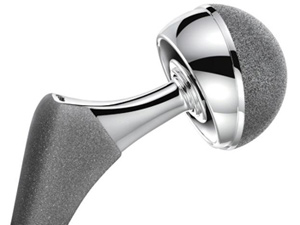
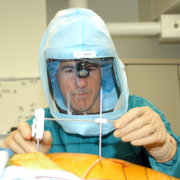

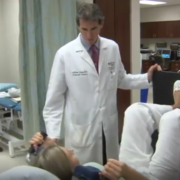
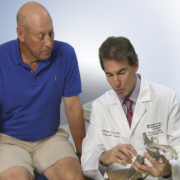
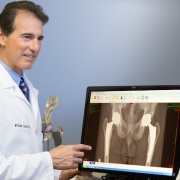
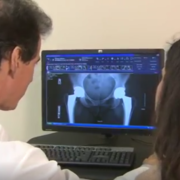


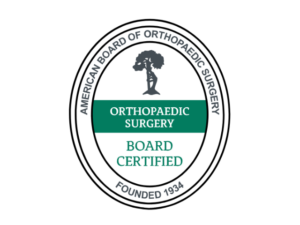


Hi Margaret,
The ML taper is a titanium non modular stem. If indeed you are developing an adverse local tissue response, it very well may be from taper corrosion. It would be important to know if a ceramic or cobalt chrome ball was implanted on the stem. Also if you have elevated metal ions systemically. The appropriate revision surgery will depend on just what is happening in the hip. Possibly it will only be necessary to revise the ball to a ceramic one and debrid the joint. A special titanium taper adaptor would need to be placed over the existing stem’s taper in order to use a ceramic ball.
Thank you,
Dr Leone
I have a metal on metal and have been having severe pain and discomfort in the joint as well as down my groin and the outside of my thigh. I tried iliopsoas release surgery to release the inpinged tendon. It releived a bit of the pain in my groin but not the ache in the joint or domn my thigh.
I am headed for a revision and the only question remains whether to replace the whole thing, including the stem or just replace the acetabular cup and head.
What is your opinion on replacing the stem?.
Michael
What did you have done? I am experiencing the same symptoms . Just had femoral stem corrosion as the cause.
Describe your treatment. I am having these symtoms now 5+ years post replacement. Tlhanks
Dr.Leon,
I have the recalled hip replacement by Johnson & Johnson, and have been having me blood levels tested every 6 months for 2 years,, along with MRI’s. My level of cobalt has risen to 20, and my chromium is at 15 now. There appears to be fluid around my socket too. I am having my surgery to remove this in early Sept. My doctor hopes to keep the rods in, as he says they are firmly implanted in the bone. The problem we are facing is the size of the ball, it is now 50 and the next largest size is 32. He is worried about dislocation, using the original rods. He has told me he may have to remove the rods as a last resort. How do you remove the rods in the leg that appear to be firmly in the bone? We didn’t really go over the extraction of the rod, and I am very worried how it is done. I see the hospital for my pre surgery test and will go by his office to see if I can talk with him about it. I guess since it is uncertain as to what will take place he didnt want to discuss something that may or may not happen.
Thank you for your help.
Sincerely.
Helen